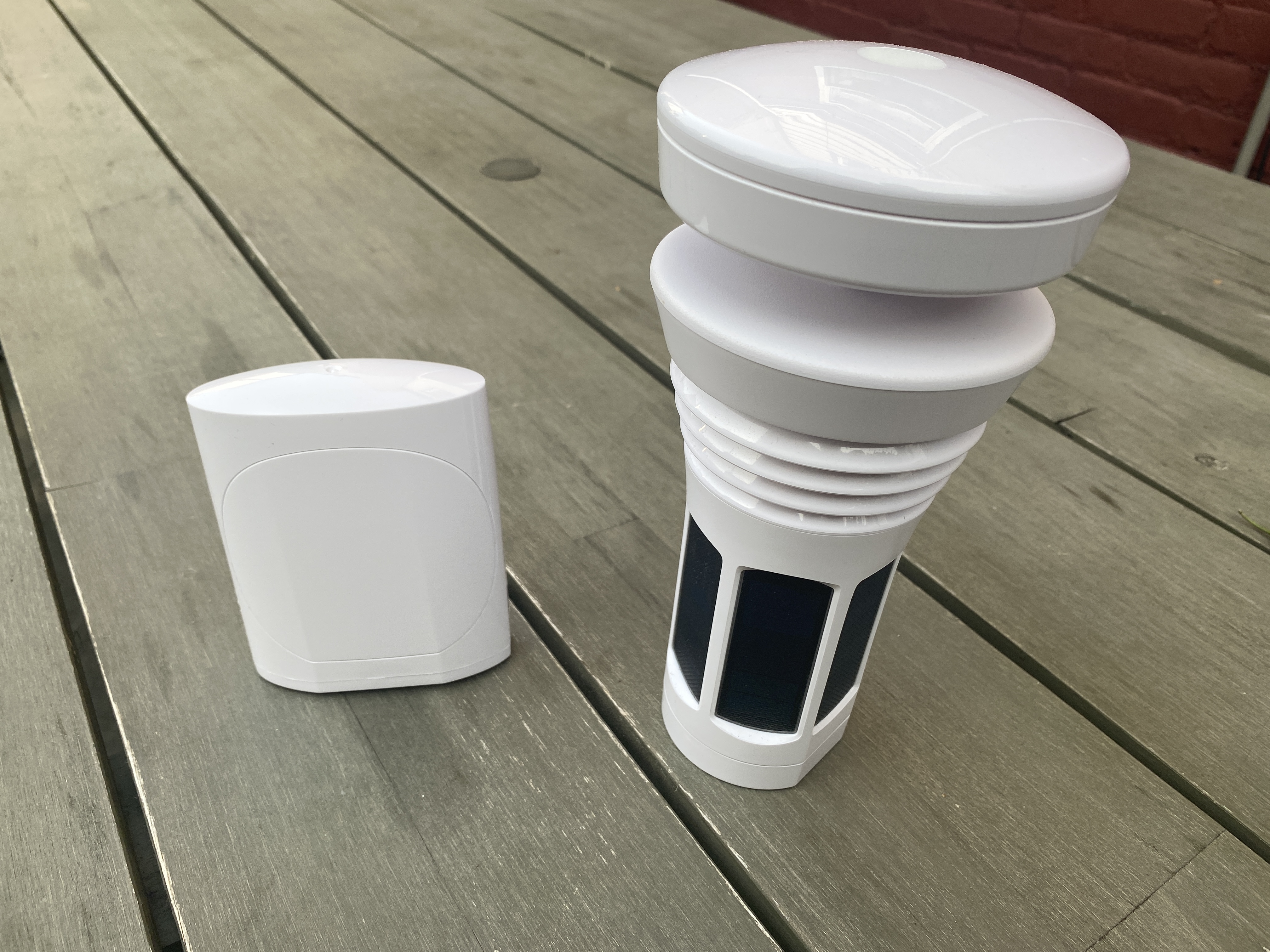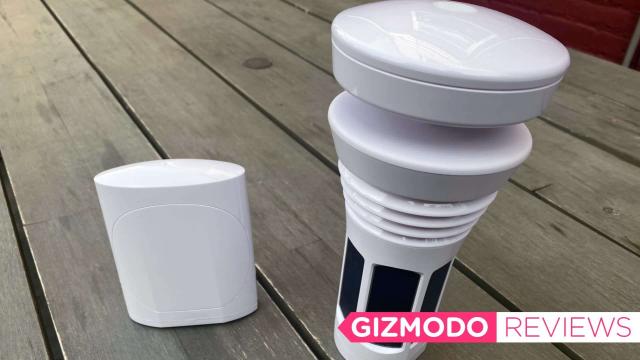Weather stations are sort of like a pocket protector for your lawn. They tell the world that the person inside the house is kind of techy, kind of fascinated by the weather, and kind of a dork. Thanks to the Tempest from WeatherFlow, you can now hide your dorkiness with a device that looks more like a lamp than a clacking wind sensor attached to an android’s severed head.
The Tempest is completely self-contained and has no moving parts. It connects to a base station inside the home and offers a light sensor for UV detection, a pressure sensor, a lightning detector with a 40 km range, temperature and humidity sensors, and a sonic wind and rain sensor that can show the wind speed and direction. At $US330 ($465) it’s pricier than more traditional weather stations, but gone are the spinning propellers and rain cups too. This weather station just sits still like some strange lamppost, listens to the world, and gathers energy from the sun.
The app ingests the data sent by the station and produces surprisingly useful graphs as well as up-to-the-minute weather conditions based on surrounding conditions and the actual weather at your location. You can also connect the Tempest to Amazon Alexa and Google Home and use IFTTT to turn on lights when it’s cloudy and notify you when it gets too cold.

WeatherFlow Tempest
What is it?
A compact and self-contained barometric station that can help predict the weather around you.
MSRP
$US330 ($465)
Like
Finally, a weather station that doesn't look like a decapitated android.
No Like
Requires a separate device for weather readouts.
Interestingly, the system also connects to WeatherFlow’s own servers to meld the data you take in with other weather data “including measurements from satellites, aircraft, radars, and other surface weather stations,” according to the company’s website. This makes for useful weather predictions in addition to the standard weather data usually associated with these stations. The Tempest uses machine learning to hopefully predict weather more precisely over time, and should you find it not doing so, the company offers a forecast guarantee so you can return the device if you’re not happy with the accuracy. In my own experience, it’s been very accurate.
The station comes with a mounting system and wireless station that has to be plugged in near your Wi-Fi. The WeatherFlow itself doesn’t need additional power, though. You can either set the station on a ledge somewhere and let it measure — it doesn’t have to be mounted very high — or do the traditional weather station schtick of putting it on a metal or wooden pole in your yard or garden. It is completely solar-powered, so there are no batteries to change. And because there are no wind scoops or other ephemera, it looks far less intimidating than traditional weather stations.
This also has to be the easiest weather station I’ve ever set up. I’ve used a number of pole-mounted weather stations over the years, and the hassle of getting them positioned correctly to measure things accurately is quite frustrating. This thing is far more fire-and-forget — you take it outside and let it start sensing. The unit I tested is currently on the roof of my garage, gathering data and predicting the weather while staying well out of sight.
That said, it doesn’t include a separate terminal dedicated to the weather readouts. Traditional weather stations like the Accurite Atlas offer that straight out of the box. Instead, the WeatherFlow Tempest uses the iOS or Android app as a readout. If you want a dedicated screen for its data you’ll have to spend extra on a dedicated device. Fans of weather stations with dedicated LCD readouts will definitely miss instant access to the temperature, wind speed, and dew point, and if you prefer having that data at a glance, then this probably isn’t the device for you. That said, having an app with historical data and predictions is definitely nice.
But the Tempest isn’t really intended for people who want something cheaper with an extra screen. It’s meant for those of us in homes full of gadgets with a phone or tablet usually glued to our persons. Its also meant for those of us who don’t really want a big screen constantly showing off the weather, and would prefer asking for it as needed. Because you can easily connect it to Alexa or Google Home, you can query the current weather with your voice, which is great if you’re tired of Google and Alexa telling you it’s going to be a lot sunnier than the storm clouds outside suggest.
The dependence on the phone and the connection to WeatherFlow’s servers is a testament to how different this thing is from previous generations. While you might still like a wonky LCD screen attached to your wall to tell which way the wind is blowing, WeatherFlow hopes you’ll be fine with your lightbulbs flashing when it gets too cold for your outdoor plants. The trade-offs in functionality and price are definitely there, but in terms of design and sensors, the Tempest is pretty state-of-the-art.
README
- No moving parts makes this far more attractive.
- AI can use the Tempest to predict the local weather.
- Smarthome integration makes it easy to manage other connected devices with weather signals.
